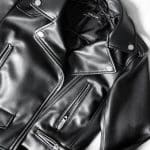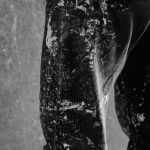The denim jacket is arguably the one piece of apparel that best represents the American look. This classic clothing is just as fashionable today as it was when it first appeared in the early 20th century. It is trendy, rebellious, rugged, and sophisticated. It’s simple to presume that the denim jacket has always been popular because it’s as common as blue jeans as well as leather boots. Still, denim actually has a fascinating history that can be traced along the lines of punks and cowboys from the counterculture.
So, where did denim initially originate, and why has it remained so popular? In our quick look at the history of the denim jacket, we’ll go over all that and more.
The History of Denim
We need to discuss the history of the sturdy cotton fabric that gives the denim jacket its distinctive texture before discussing the denim jacket itself. As “denim” originated from “of Nîmes,” or “de Nîmes”the name itself refers to the material’s genesis in the southern French region of Occitanie.
According to legend, the fabric was created for sailors in the early nineteenth century who required tough jackets and pants to withstand the harsh open sea conditions. Denim more than met the need, quickly establishing itself as the standard fabric for European explorers and seafarers.
In fact, it was so well-liked that an American businessman noticed it, which led to a permanent change in how we dress. Of course, Levi Strauss was that man.
According to research, Strauss brought denim to America in the 1850s when designer Jacob Davis transformed it into practical trousers. During the California gold rush, the pair sold the new pants to miners in the region and discovered that they catered to a very lucrative demographic. The work trousers, the forerunner of the modern “blue jeans,” were in high demand,so Davis and Strauss decided to create a second denim item in 1905: the Levi’s Blouse.
The top had a relatively straightforward design with 4 buttons with a single breast pocket, and it was intended to be worn with pants. Once more, the item quickly became popular among miners and spread to other outdoor workers, including cowboys and railroad workers. The chemise, which by 1930 had progressed into the “Slim Jacket,” a design resembling the denim jacket we are all familiar with and love today, was prominently associated with this final demo.
Role of Hollywood:
In the 1930s, due in large part to the prominence of Hollywood Westerns, denim came to be associated with cowboys around the same time.
These films portrayed cowboys as tough, manly outlaws who lived outside the bounds of “civilized” society. They swaggered around in tough-looking denim outfits, addressed current into their own hands, kissed the girl, sought justice, and saved the day.
The idea of a cowboy persisted even though these representations fell short of the true meaning of the term (which involved much less machismo and much more, you know, hard labor). And although denim wasn’t yet broadly available in stores, but cowboys and their clothing were fantastic.
Hollywood would grant denim yet another boost in the 1950s and 1960s when directors replaced the old-school western rebels with a new kind of antihero: the young, attractive rebel without a cause. James Dean, Marlon Brando, and Steve McQueen, among others, embodied this spirit in the movie of the same name.
From Counterculture to Commercialization
Denim began to spread outward to the general public around this time, initially with the sale of blue jeans in the 1960s and then with the introduction of the “Type III” Denim Jacketin 1967 from Levi Strauss & Co. Though widely popular, it was most quickly adopted by the counter-culture minority of the 1960s, who wore it in opposition to their parents’ button-up business attire.
Like most “cool” fashions, denim jackets eventually gained popularity and became a closet mainstay by the 1970s and 1980s. Musicians like Bruce Springsteen and John Lennon played a significant role in popularising the genre by making it accessible to rockers as well as blue-collar workers alike.
By the early 2000s, brands like Levi & Strauss, Wrangler, Tom Ford, Gucci, Calvin Klein, Dior, and others had all created their own versions of the denim jacket, making it an undeniably versatile piece of clothing.
Customizing Your Jackets
The denim jacket became a key component of fashion in the heavy metal scene. Denim played a vital role in the style, whether worn with full jackets or cutoffs, blue or black.
The jackets served as a blank canvas on which metalheads could display their preferred bands and musical tastes.
The 1980s saw the emergence of the ripped and distressed denim trend, which was embraced as a fashion aesthetic to express casualness and nonchalance further. Male prostitutes who had to spend a lot of time on their knees, having to wear out the material of their jeans, are said to have been the first to sport the look of ripped jeans.
Denim jackets were a staple of the “Clone” look, a hyper-masculine, highly sexualized appearance worn by gay men in the 1970s and 1980s. Later, in the late 1980s and early 1990s, the Grunge movement, which was anti-corporate and anti-everything, found a spot for the denim jacket—so long as it was legitimately old and worn and not purchased in a mall.
It complemented the grunge uniform’s worn-out t-shirts and flannel shirts perfectly. Of course, major fashion companies sold distressed denim jackets for those who didn’t want to wait for their clothing to wear out naturally.
The denim jacket established a much more polished look in the 1990s, departing from the shabby-chic appearance of earlier movements. The denim was pricey and made by a designer. Both the hip-hop artists and the hip-hop followers wore identical outfits that were obviously not inexpensive.
Here, a sharply cut denim jacket—possibly created by a rapper-endorsed brand—was worn over a box-fresh outsize t-shirt and paired with unlaced boots and low-hanging pants.






